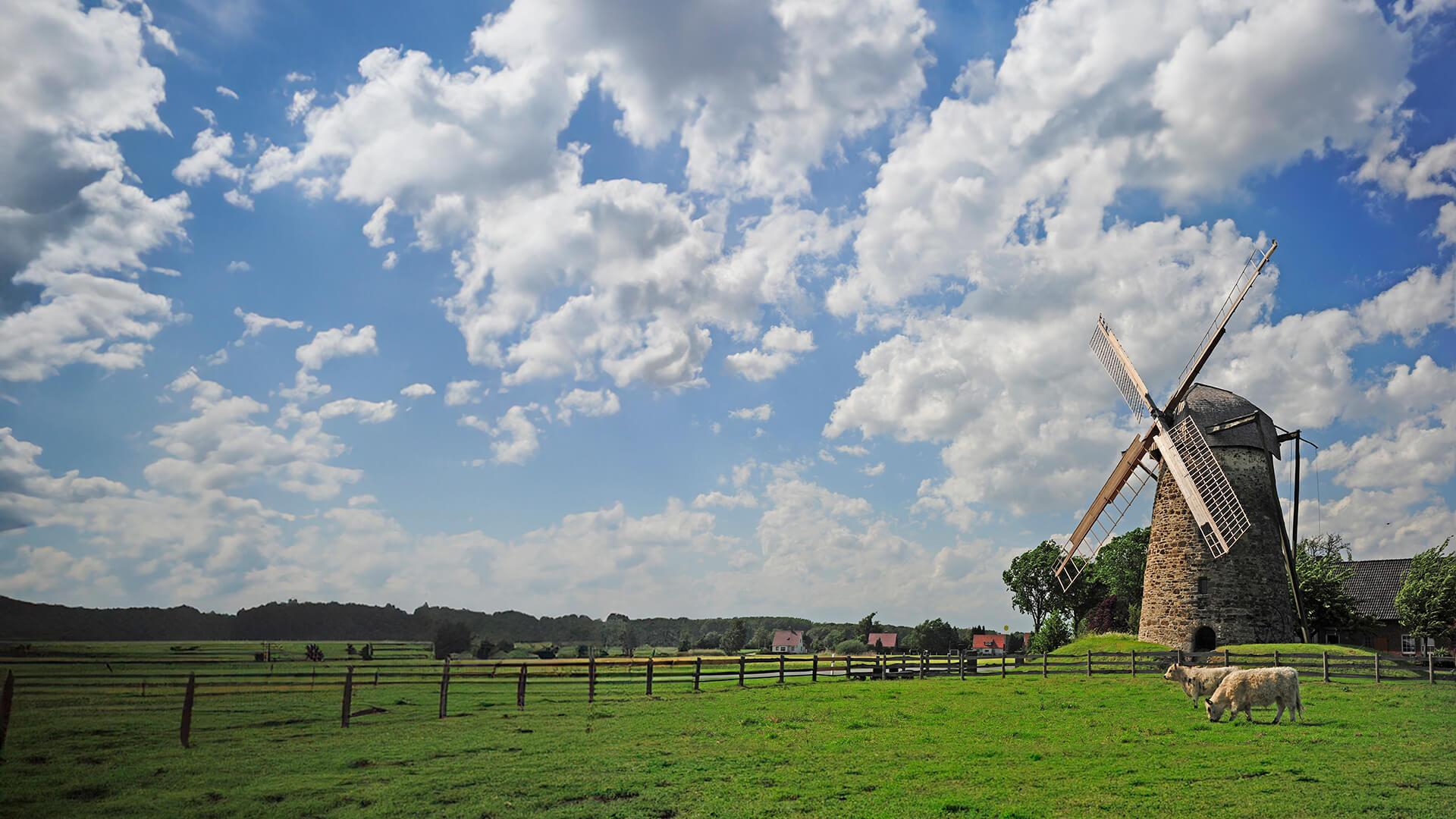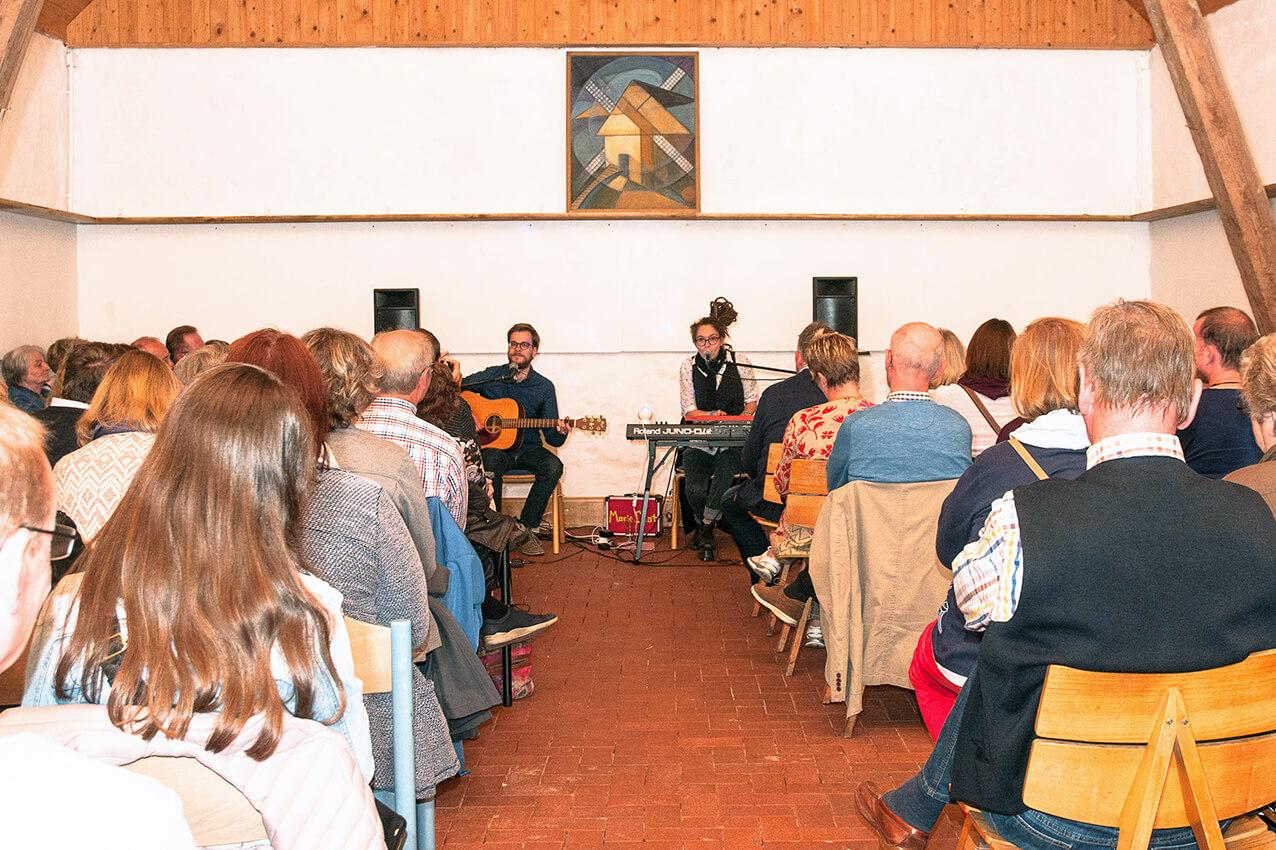


Minden-Lübbecke
Die Kulturscheune Wehe
The barn, originally really part of the agricultural miller's estate, has been developed by us over time from a simple storage room into a versatile event venue. Initially, we used it as storage space for equipment such as barbecues, parasols, tents and seating so that we could cater for visitors to our milling and baking days. But more demanding uses soon made themselves heard and space became available: if the weather was cool and wet on Ascension Day, the Low German service could not take place "under the mill cross" - and the barn became a makeshift church. And for the opening of the season three weeks before Easter, the barn was clearly the best place for the small arts and crafts market. This soon got a doppelganger at the end of the season on October 3. By the time our friends from the pedigree poultry breeders were looking for a suitable space for their annual show, the good old barn had finally become a multifunctional event space.

Minden-Lübbecke
Die Kulturscheune Wehe
The barn gained additional importance when it was chosen as the venue for the annual show of the pedigree poultry breeders. This development led to the barn being extensively renovated and equipped for cultural purposes in 2015, including facilities for displaying paintings and photographs. Since then, it has been known as the "Culture Barn" and serves the community as a multifunctional space for various events. What does this mean for us and our guests?
- Concerts (e.g. with Marie Diot), readings (e.g. with Tine Wittler) or lectures (e.g. with the Lübbeck meteorologist Friedrich Föst) take place there at irregular intervals.
- Creative artists on our grinding and baking days have a place to rest and retreat here.
- Local painters and/or photographers hang their works there on baking days without an arts and crafts exhibition.
- On Ascension Day, the barn is still available as a temporary church.
- Arts and crafts also have their place there twice a year.
- In future, school classes and other groups will be able to see and hear multimedia presentations related to our rural crafts here.